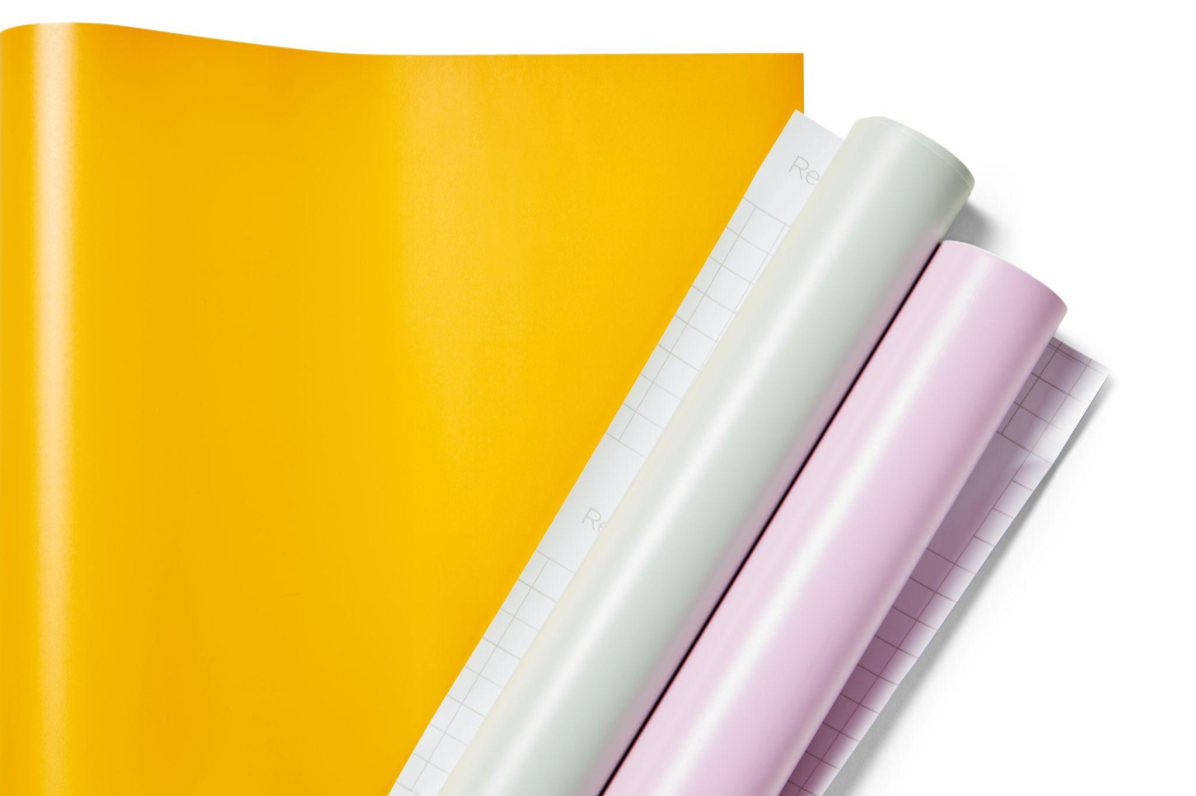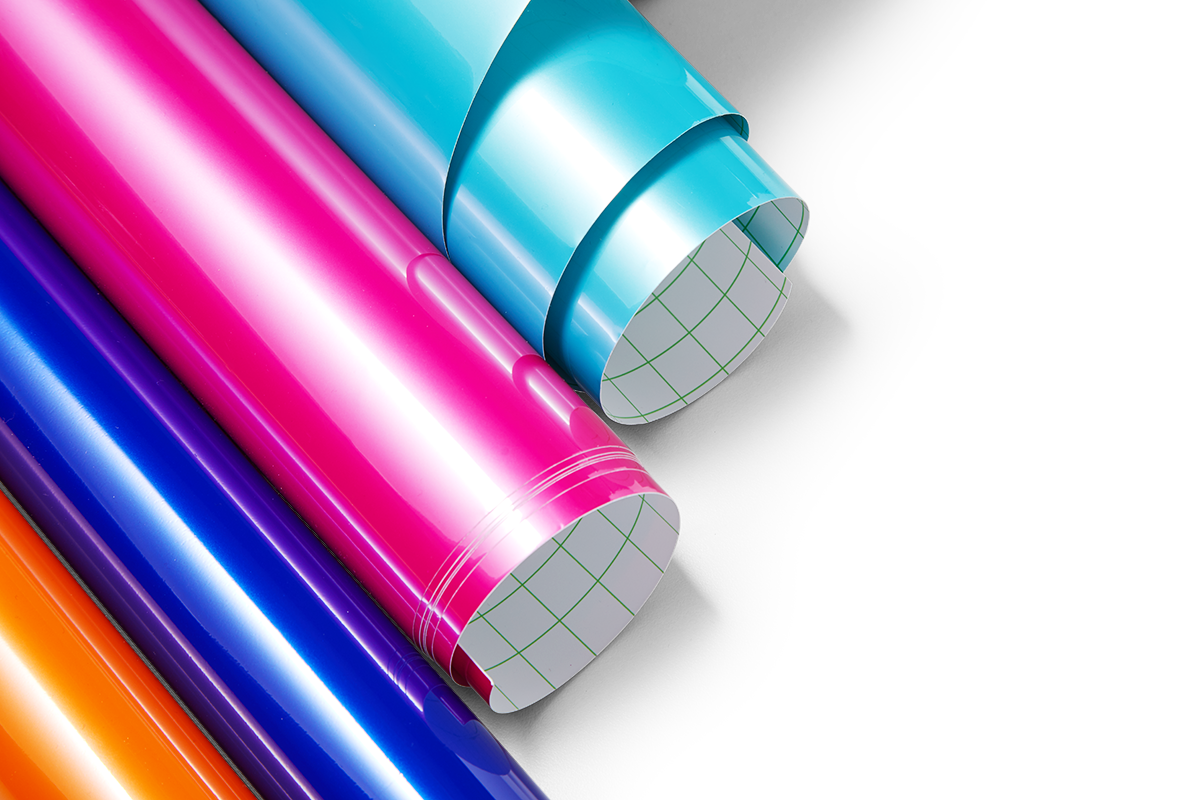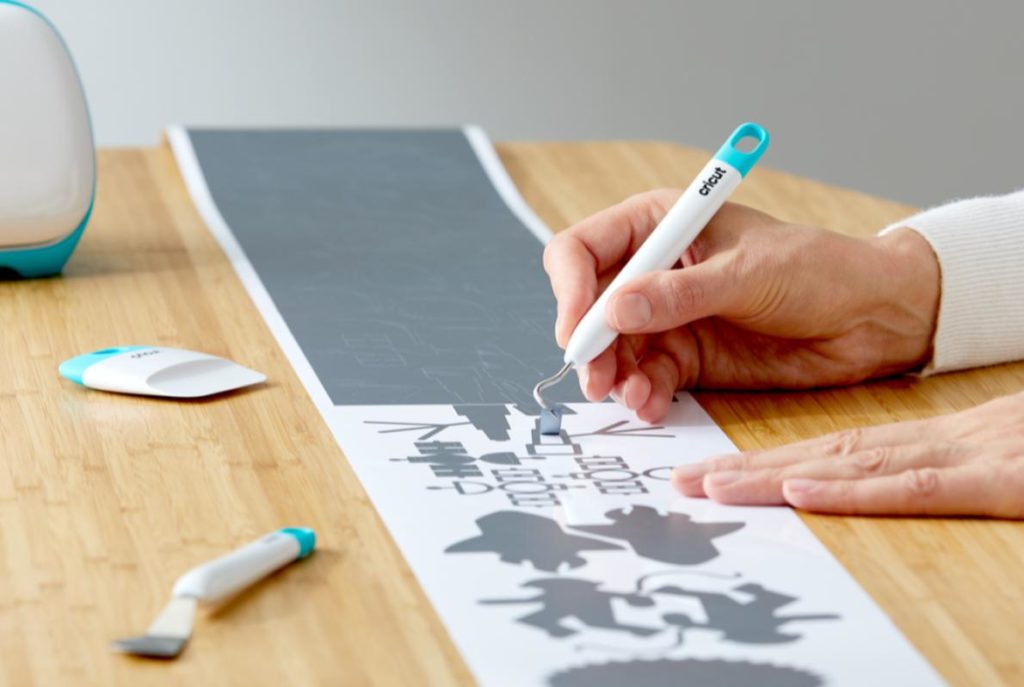Cricut materials are innovative, high-quality, and perfect for all of your awe-inspiring, memory-making projects. Even so, we know figuring out which materials to use and for what project can be confusing or daunting. In one of our recent Q&A’s on Instagram, we asked our members what questions they had about our materials. Below are some of your top questions, answered!
When should I use permanent vs. removable vinyl?
Cricut permanent vinyl is great for projects that you’ll want to withstand the test of time. We love this Cricut material because it is weather and fade-resistant, so think of projects that might interact with the elements, like car decals, glassware, or outdoor signs. Cricut removable vinyl is just that — durable but removable without residue. Great for indoor wall decals, signs, or anything else for a temporary application, we call this vinyl a renter’s best friend.
To check which one you have after they are removed from their original packaging, flip the vinyl! If you see green squares, that’s permanent. Gray is removable.


Why isn’t my vinyl sticking?
What is the application surface? Make sure the surface is clean and dry. Flat surfaces are easier to apply than rough and textured ones. Try to reburnish onto the surface, starting in the center and moving out toward the edges.
Second, depending on what vinyl you’re using, you’ll want to be sure you’re using the correct Transfer Tape. For most of our vinyl, Transfer Tape is what you’ll need but if using shimmer, true brushed, textured metallic, and frosted vinyl, you’ll need StrongGrip Transfer Tape. Peel the Transfer Tape away from the vinyl at a 45-degree angle. If the vinyl sticks to the Transfer Tape, simply burnish the vinyl onto the surface again. Then continue to peel the Transfer Tape away from the vinyl.
Why doesn’t Cricut always cut through vinyl?
Confirm the correct cut setting is being used. Remove the blade housing from your machine. Ensure you are using a Cricut brand blade. Inspect the blade and blade housing and remove any debris that may be stuck to the blade or lodged in the blade housing. Once clean, perform a test cut. You may need to increase the pressure settings two to three times by increments of 2-4 to see a change in the cut result. If that doesn’t solve the issue, try changing your blade. Blades can become dull with use and replacing them with a new, sharp blade often solves this issue. If this happens with only one specific product, please let Cricut Member Care know which product it is.
How do I get my vinyl from tearing too easily when working with small letters?
The vinyl is optimized for a premium cutting experience in your Cricut machines. With this, some intricate designs can be sensitive to film tearing in narrow sections or sharp angles. Try using larger designs when possible to improve tearing resistance. The weeding direction and transfer tape peeling direction do play a role in this as well. Peel in the direction of cuts. This often requires peeling in multiple directions within a given design. Peeling against the vinyl is much more prone to tearing versus peeling directionally with the cuts.

What’s the difference between iron-on and Infusible Ink?
Unlike the iron-on (HTV) process, where artwork is attached on top of a base material using adhesive, Infusible Ink becomes one with the material itself. The results are bright, beautiful, seamlessly smooth transfers that never flake, peel, wrinkle, or crack.
Some other differences include:
- If you like sharp, vivid, and vibrant designs that never crack, peel, or flake, Infusible Ink products are your go-to. Transfers truly are permanent.
- Infusible Ink products must be applied to a compatible Infusible Ink blank* (t-shirts, tote bags, coasters and mugs to name a few!)
- Iron-on or HTV materials can be applied to almost any surface
- If your project vision requires a dark-colored base (substrate) or if you want to use a specific base material like wood or 100% cotton, use iron-on/heat-transfer vinyl.
- If your project requires a specialty finish or effect, you’ll find those only with iron-on/heat-transfer vinyl products, e.g., glitter, holographic, metallic/foil.


*Look for Cricut blanks with the Infusible Ink compatibility badge.
What’s “smart” material and what’s the difference between smart and regular Cricut materials?
Engineered to work without a cutting mat, Cricut Smart Materials™ make extra-long cuts easy! Depending on your machine, Smart Materials come in a variety of material types, including Smart Vinyl, Smart Iron-On, and Smart Paper Sticker Cardstock.
For regular Cricut materials, you can still enjoy the ease of cutting and weeding your material but the size of your mat would limit the size of your design.
How do I know what heat setting/time to hold the heat press for layered iron-on?
Layered iron-on projects are becoming increasingly more popular, and that’s not surprising! When done correctly, layering iron-on can give any project extra dazzle, dimension, and beautiful long-lasting results! We have a really useful article or this awesome layering video that walks you through it step by step and a number of layered iron-on projects in Design Space using Cricut materials if you’re ready to get started. Happy layering!
*Source: https://inspiration.cricut.com/frequently-asked-questions-about-cricut-materials/




